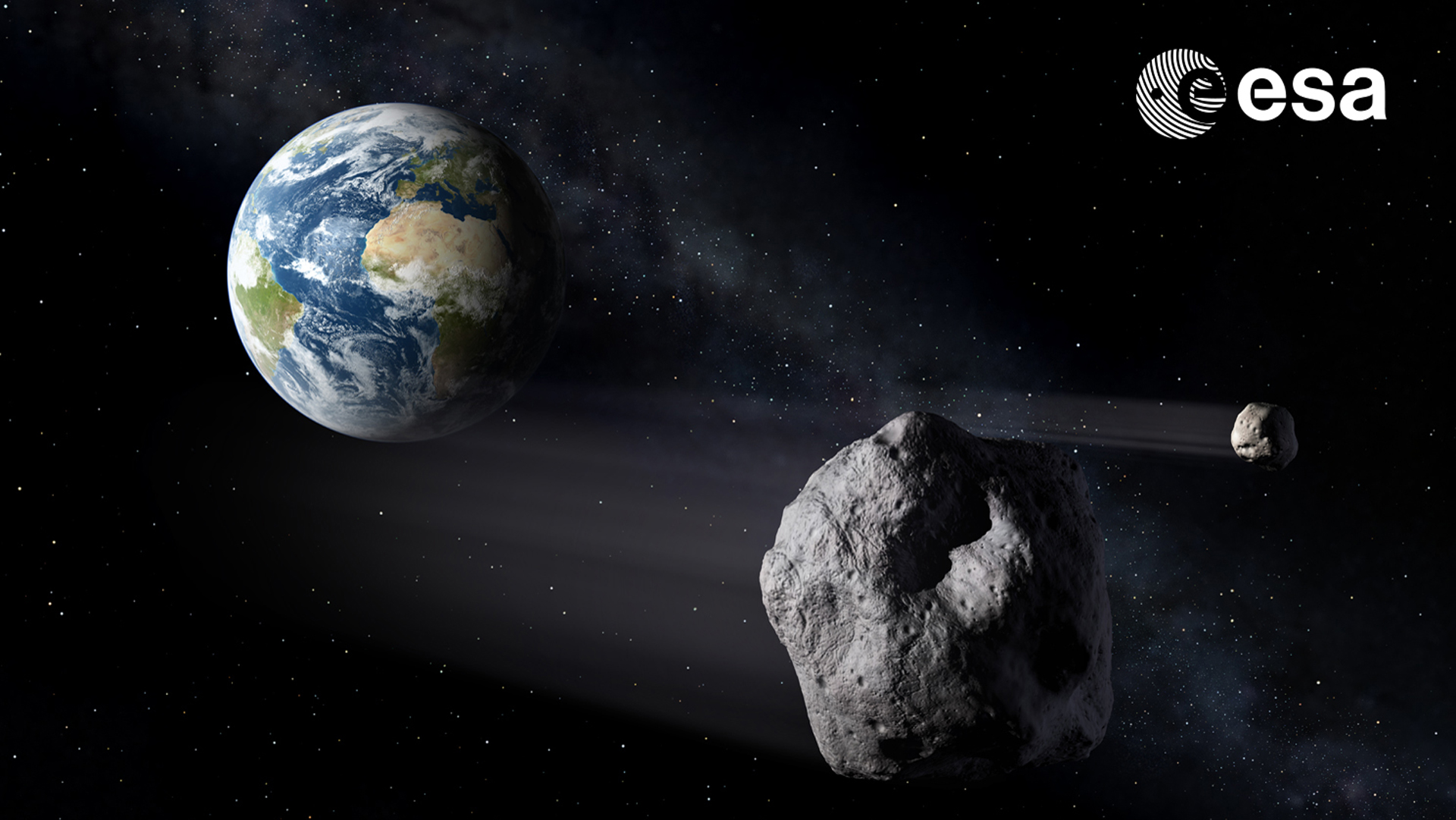Big asteroid to zoom by Earth on Wednesday

A sizable space rock will make its closest approach to Earth in four centuries on Wednesday evening (Feb. 15), but there's nothing to fear.
The near-Earth asteroid 2005 YY128 will zoom within 2.8 million miles (4.5 million km) of our planet at 7:46 p.m. EST on Wednesday (0046 GMT on Feb. 16) — closer than it's gotten to us in more than 400 years, according to EarthSky.org.
Still, that's about 12 times the distance from Earth to the moon, so there's no chance the asteroid will hit us on this pass, experts stress.
Related: What are asteroids?
As its name suggests, 2005 YY128 was discovered in 2005, by astronomers at Kitt Peak Observatory in southern Arizona. Over the past 17 years, researchers have mapped its orbit with a high degree of precision.
Their observations, however, haven't nailed down 2005 YY128's size. The best astronomers can give us is a diameter range — somewhere between 1,903 feet (580 meters) and 4,265 feet (1.3 km), according to EarthSky.
2005 YY128 therefore qualifies as a potentially hazardous asteroid (PHA), a designation given to space rocks at least 460 feet (140 m) wide whose orbits take them within 0.05 astronomical units (AU) of our planet. (One AU is the average Earth-sun distance — about 93 million miles, or 150 million km. So 0.05 AU is roughly 4.6 million miles, or 7.4 million km.)
Breaking space news, the latest updates on rocket launches, skywatching events and more!
If 2005 YY128 did slam into Earth, it would do serious damage, no matter which part of its stated size range the asteroid actually occupies.
"The largest near-Earth asteroids (> 1 km diameter) have the potential to cause geologic and climate effects on a global scale, disrupting human civilization and perhaps even resulting in extinction of the species," the Sweden-based nonprofit Global Challenges Foundation wrote of the asteroid-impact threat. "Smaller NEOs [near-Earth objects] in the 140-meter to 1-km size range could cause regional up to continental devastation, potentially killing hundreds of millions."
Again, however, do not be alarmed: 2005 YY128 poses no danger on this pass.
2005 YY128's close approach comes on a fateful day — the 10th anniversary of the Chelyabinsk airburst.
On Feb. 15, 2013, a roughly 65-foot-wide (20 m) space rock exploded without warning over the Russian city of Chelyabinsk, shattering thousands of windows and causing minor injuries on the ground (mostly from flying shards of broken glass). The incident highlighted the importance of better understanding the NEO population, astronomers said, stressing that it's only a matter of time before a truly dangerous asteroid lines Earth up in its crosshairs.
NASA opened its Planetary Defense Coordination Office a few years after the Chelyabinsk event, and astronomers and researchers around the world have joined the Earth-protection fight.
As a result, scientists are getting a better and better handle on the NEO population. For example, NASA and its partners have found more than 95% of the asteroids out there at least 0.6 miles (1 km) wide that are thought to come within 30 million miles (50 million km) of Earth at some point. And none of them pose a danger for the foreseeable future.
Mike Wall is the author of "Out There" (Grand Central Publishing, 2018; illustrated by Karl Tate), a book about the search for alien life. Follow him on Twitter @michaeldwall. Follow us on Twitter @Spacedotcom or Facebook.

Michael Wall is a Senior Space Writer with Space.com and joined the team in 2010. He primarily covers exoplanets, spaceflight and military space, but has been known to dabble in the space art beat. His book about the search for alien life, "Out There," was published on Nov. 13, 2018. Before becoming a science writer, Michael worked as a herpetologist and wildlife biologist. He has a Ph.D. in evolutionary biology from the University of Sydney, Australia, a bachelor's degree from the University of Arizona, and a graduate certificate in science writing from the University of California, Santa Cruz. To find out what his latest project is, you can follow Michael on Twitter.
